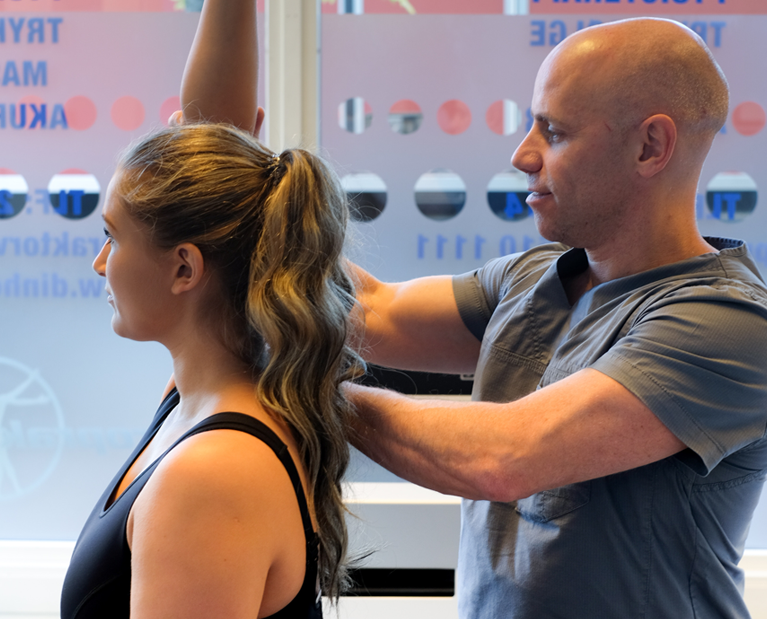5 Benefits of One-On-One Physical Therapy Treatments

Most people, throughout their lives, have encountered the need to go to physiotherapy. Whether it is a professional athlete or recreational athlete, an injury at work, or the result of an accidental fall, jump, blow, twisted wrist, or spinal nerve entrapment. Everyone knows how unpleasant and painful such an experience is. We are in a situation where our most ordinary movements are limited, we suffer pain, we are absent from work and we are dysfunctional in every way. A whole series of our reduced or no possibilities is being launched, because of which both we and our family members are suffering.
In addition to all these complications, we are aware that after removing the cast or passing the acute state of injury, we will recover in the form of physiotherapy. It is a long process, which requires a considerable commitment of going and coming, spending time and money. At the same time, we are always worried about the end result, our complete recovery and return to regular life activities.
What does one on one physical therapy mean?

Source: setptusa.com
In the past, only professional athletes or people with extremely severe injuries had the privilege of being treated by one or more therapists. It was quite common to come to group physiotherapy, where everyone does certain exercises or is given electricity, a magnet, a laser, all depending on the injury and the method of its treatment.
The modern age has brought a new approach to many things, including physiotherapy. Experience and logic have shown that the best effect and excellent results are given by One-on-One Physical Therapy. The benefits of this treatment are numerous, and we will highlight some of them:
1. Commitment to one patient only
Surely you once experienced a feeling of helplessness and hopelessness, when you found yourself in a clinic, in a waiting room full of sick people. So it is with the physiotherapy room, where a dozen convalescents are waiting to be shown the exercises, to help with the work itself, stretching or adding exercise equipment. Everyone thinks that it is the most difficult for him, that his injury is the most painful and that he has the right of priority. General crowds and nervousness certainly do not contribute to the atmosphere of healing and work enthusiasm.
When personalizing One-on-one physical therapy, the physiatrist first performs an examination, clinically, ultrasound or X-ray then determines the therapy. The patient is taken over by a physiotherapist and begins to work exclusively with him, exercises that are intended for his injury. There is enough time, peace reigns and the patient can calmly and calmly listen to what is asked of him.
2. Communication

Source: miraclerehabclinic.com
Many people have never trained anything, they are not good at sports, and therefore no exercises of any kind. If they find themselves in a situation where they get physiotherapy, they often do not understand how to exercise. At the same time, if the component of pain from a recent injury, atrophy of muscles, and stiff joints is included, you will get a person who will not know how to cooperate and thus recover. In group therapy, it is difficult to listen to everyone and dedicate yourself completely to them. Often patients come to the exercises but stagnate or recover slowly.
It is obvious that individual physiotherapy, through calm communication, detailed explanation of exercises, and the way they affect the locomotor system, allows the patient to learn and understand exactly what to do.
There is another good aspect at the level of communication, and that is if the patient is treated by one or, possibly, two physiotherapists, they connect and develop their internal relationship. They establish their own topics to discuss, and relaxation of the patient occurs, and thus better conditions for work and progress are created.
3. Injury prevention
Any exercise can be counterproductive if done improperly. This also applies to healthy people, and especially to convalescents. The physiotherapist is there to demonstrate the exercise, and help during the performance, but also to monitor the extent to which it is done properly. Sometimes just one movement is enough that can bring pain, a new injury, and set back everything that has been achieved so far. Physiotherapy is often very painful and patients unknowingly avoid some positions or multiple repetitions of a particular exercise. With the very presence and undivided attention of the physiotherapist, the patient is more relaxed, has confidence, works harder, and knows that he is under the absolute control of a professional.
4. Approach to injury from several aspects

Source: kinetisense.com
Each injury has its own characteristics and symptoms and is treated in a certain way. There are prescribed exercises that increase mobility and strengthen the muscles that hold the skeleton, stretching and possible loading with rubber bands and lighter weights are also very common. Nerves and muscles are additionally stimulated with currents, laser, ultrasound, light lamps, massages, and creams that support tissue elasticity and reduce pain. This is a common treatment, which depends on the nature of the injury, the possibility, and the age of the patient… it is certainly personalized and everything is taken into account.
However, everything in the body is connected, so the therapist forces the strengthening of certain structures, which he deems necessary. If one part of the body is weakened (usually the back muscles, as well as the legs and arms), this can be manifested by an injury to the joint or a pinch of the spinal nerve. That is why the therapist leads the whole process in a way that is useful, complete, and includes several segments. By strengthening various parts of the body, posture is corrected, the overall statics of the organism are improved and thus injuries are prevented in the future.
5. License
It is completely clear that for such a delicate issue, there is nothing more important than a professional and licensed physiotherapist. Today’s time brings a lot of trained people who present themselves as experts of all kinds. Often these are superficial and insufficiently informed people, who have no idea how much damage they can do. Everyone who deals with physiatry had to graduate from the Faculty of Medicine or one of the specialized schools. With a nostrified diploma and internship that lasts the prescribed time, you can approach this demanding and responsible job.
There is also a psychological aspect that a physiotherapist should have, especially in one-on-one physical therapy, which is patience, composure, empathy, the ability to answer the same questions countless times, and being aware of the importance of each patient. Not everyone is for this job, so it needs to be analyzed in detail before the whole world enters.
Conclusion
Anyone who has had experience with injuries knows that the main thought, as long as we are in that state – is a speedy recovery. No one likes to be powerless, weak, and dependent on other people’s services and engagements. Therefore, if you are in a situation where you need the help of a physiotherapist, rely on all the benefits of One-on-One physical therapy. No one has repented, even though it is necessary to pay a little more. The final product is you, on your feet, able to move, work and live according to your preference.
